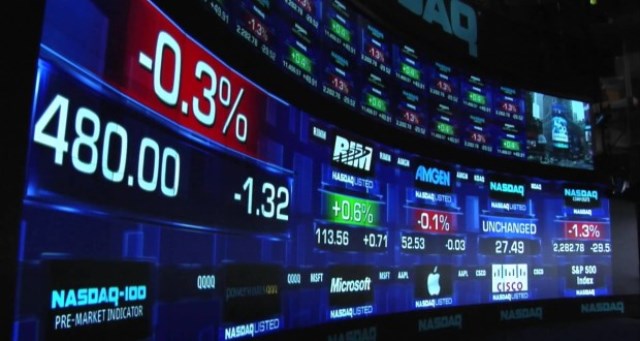A gauge of global equity markets eased and the dollar slipped on Monday as investors took a dim view of an expected new round of tariffs from Washington on Chinese goods, which would escalate a simmering U.S.-Sino dispute over trade.
U.S. President Donald Trump was expected to announce new tariffs on $200 billion in Chinese goods as early as Monday, and China has said it would retaliate.
A weaker dollar lifted gold prices and the price of most industrial metals slipped as the tit-for-tat dispute has fueled concerns that demand for metals will weaken.
Apple and Amazon.com bore the brunt of investor worries about the tariffs, which were on a list unveiled in July that included $200 billion worth of internet technology products, other electronics, printed circuit boards and consumer goods.
“Investors are slowly starting to realize that these new tariffs could be extremely disruptive to the supply chain,” said Art Hogan, chief market strategist at B. Riley FBR in New York.
The trade tiff has yet to be felt in U.S. markets as the tariffs, which now are set at 3.8 percent, may rise to just 10 percent, which most companies can handle in a growing economy, said Brian Nick, chief investment strategist at Nuveen.MSCI’s gauge of stocks across the globe.MIWD00000PUS shed 0.23 percent while the pan-European FTSEurofirst 300 index .FTEU3 of leading regional shares rose 0.05 percent.
On Wall Street, the Dow Jones Industrial Average .DJI fell 8.84 points, or 0.03 percent, to 26,145.83. The S&P 500.SPX lost 8.27 points, or 0.28 percent, to 2,896.71 and the Nasdaq Composite .IXIC dropped 72.22 points, or 0.9 percent, to 7,937.82.
The dollar’s weakening is a good sign for global markets, especially in emerging markets where the strong dollar has been a cause for concern, Nick said.
The greenback has benefited from safe-haven flows as the U.S.-Chinese trade conflict worsened.
The dollar index .DXY fell 0.4 percent and the euro EUR= rose 0.48 percent to $1.1684. The Japanese yen JPY= strengthened 0.05 percent versus the greenback at 112.02 per dollar.
U.S. Treasury yields rose across the board on growing expectations the Federal Reserve would raise interest rates in September and December, and perhaps at least twice more in 2019.
Yields on the 10-year U.S. Treasury note touched 3.022 percent, the highest level since late May. U.S. 30-year yields also hit a four-month peak of 3.159 percent, while 2-year yields soared to 2.799 percent, the strongest level in 10 years.
The benchmark U.S. 10-year note US10YT=RR last rose 1/32 in price to yield 2.9922 percent.
Yields on 10-year German bunds rose to 0.472 percent, but pared losses to trade at 0.458 percent.
Oil prices were little changed as traders weighed potential supply cuts from U.S. sanctions on Iran against deepening trade tensions between the United States and China that could dent global crude demand.
Brent crude LCOc1 futures rose 11 cents to $78.20 a barrel by 11:12 a.m. EDT (1512 GMT), while U.S. West Texas Intermediate (WTI) crude CLc1 futures fell 3 cents to $68.96 a barrel.














